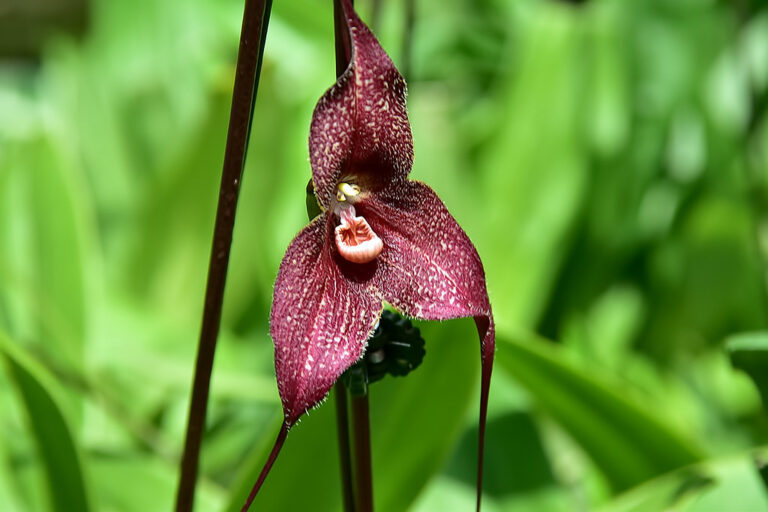The pictures we use in our articles might not show exactly what the words say. We choose these pictures to make you interested in reading more. The pictures work together with the words but don’t take their place. The words still tell you the important facts.
Are you intrigued by the mysteries of nature and the captivating beauty of plants? If so, you're in for a treat as we delve into the enchanting world of Mimosa pudica, also known as the Sensitive Plant or touch-me-not. This remarkable species of plant has captured the hearts of botanists and nature enthusiasts with its intriguing leaf movements and colorful blooms. But there's more to Mimosa pudica than meets the eye. From its medicinal uses to its environmental benefits, this plant offers a wealth of surprises waiting to be uncovered.
The Enigmatic Sensitive Plant
Mimosa pudica, aptly named the Sensitive Plant, belongs to the pea family and is renowned for its unique ability to fold its leaves inward and droop in response to touch or external stimuli. This captivating behavior serves as a natural defense mechanism against herbivores, allowing the plant to protect itself from potential threats.
A Taste of History: Mimosa pudica’s Origins
Native to the tropical regions of South and Central America, Mimosa pudica has a rich history deeply rooted in traditional medicine. For centuries, various cultures have harnessed the plant's beneficial properties to treat a wide range of ailments, including diarrhea, dysentery, skin infections, and even depression.
Unraveling Curious Leaf Movements
Beyond its sensitivity to touch, Mimosa pudica exhibits nyctinastic movements, where its leaves fold together in response to changes in light intensity or during nighttime. This behavior, controlled by the plant's circadian rhythm, adds an additional layer of intrigue to its already captivating nature.
The Beauty of Pink and Purple Blooms
When in bloom, Mimosa pudica adorns itself with small, ball-shaped pink or purple flowers that cluster together, creating a vibrant display of colors. These blossoms not only enhance the plant's appearance but also attract pollinators, contributing to its ecological importance.
Harnessing Medicinal Powers
Mimosa pudica's medicinal properties have made it a valuable resource in traditional medicine. Believed to possess anti-inflammatory, antimicrobial, and analgesic properties, the plant has been utilized by various cultures to address a myriad of health concerns with remarkable efficacy.
Eco-Friendly Contributions
In addition to its medicinal uses, Mimosa pudica plays a crucial role in environmental conservation. By fixing nitrogen, preventing soil erosion with its widespread root system, and providing shelter and food for insects and small creatures, this plant actively contributes to improving soil quality and supporting biodiversity.
An Ornamental Delight
With its unique leaf movements and vibrant blooms, Mimosa pudica has earned a reputation as a sought-after ornamental plant for gardens and indoor spaces. Adding an element of intrigue and charm to any floral display, this plant never fails to captivate onlookers with its enchanting allure.
The Resilience of Seeds
Mimosa pudica produces small, long-lasting seeds that exhibit remarkable adaptability for dispersal. These seeds can survive harsh conditions and remain dormant until they find a suitable environment for growth, showcasing the plant's resilience and survival strategies.
Climbing to New Heights
While primarily a low-growing plant, Mimosa pudica can display climbing behavior with the help of tendrils, enabling it to reach higher levels and access sunlight more effectively. This adaptive trait allows the plant to thrive in diverse environments and maximize its growth potential.
Cultivation Tips and Care Guidelines
For those looking to cultivate Mimosa pudica, rest assured that it is relatively easy to grow and care for. With a preference for well-draining soil, moderate watering, and ample sunlight, this plant thrives in conditions that mimic its natural habitat. However, it is essential to avoid overwatering, as excessive moisture can lead to root rot and compromise plant health.
Exploring the Many Names of Mimosa Pudica
In addition to its popular monikers of "Sensitive Plant" and "Mimosa pudica," this intriguing species is known by a variety of other names, including "Touch-Me-Not," "Shameplant," "Humble Plant," and "Sleeping Grass," reflecting the diverse cultures and traditions that have embraced its unique qualities.
Ecological Considerations: Invasiveness of Mimosa Pudica
While Mimosa pudica is a beloved plant in many regions, its adaptability and high seed production can sometimes lead to invasiveness in certain areas. Rapid spread and competition with native vegetation have raised concerns about its ecological impact, emphasizing the need for responsible cultivation and management practices.
Embracing the Wonders of Mimosa Pudica
In conclusion, Mimosa pudica stands as a testament to the beauty and complexity of the natural world. From its mesmerizing leaf movements to its invaluable contributions to medicinal practices and environmental sustainability, this plant continues to amaze and inspire admirers worldwide. As you encounter Mimosa pudica in all its glory, take a moment to appreciate the marvels it embodies and the intricate balance it maintains within ecosystems.
Frequently Asked Questions:
-
Why is Mimosa pudica called the sensitive plant?
Mimosa pudica earned its nickname as the sensitive plant due to its unique ability to close its leaves in response to touch or external stimuli, serving as a defense mechanism against potential threats. -
Can Mimosa pudica be grown indoors?
Yes, Mimosa pudica adapts well to indoor environments and can thrive when provided with adequate sunlight, water, and care. -
Is Mimosa pudica considered an invasive species?
While loved for its unique traits, Mimosa pudica can become invasive in certain regions, particularly tropical areas where its rapid spread can outcompete native plants. -
Does Mimosa pudica have medicinal properties?
Mimosa pudica has a long history of use in herbal medicine, believed to possess anti-inflammatory, antimicrobial, and analgesic properties that offer diverse health benefits. -
How can Mimosa pudica be propagated?
Mimosa pudica can be propagated through seeds or stem cuttings, both of which require specific care and conditions to encourage successful growth. -
Is Mimosa pudica toxic to pets?
Mimosa pudica is considered non-toxic to pets, but it's always advisable to monitor interactions between pets and plants to ensure their safety.
Unveiling the hidden wonders of Mimosa pudica reveals a plant imbued with captivating qualities and environmental significance. As you explore the unique adaptations and intricate behaviors of this sensitive plant, you'll gain a newfound appreciation for the delicate balance it maintains within ecosystems. Embrace the enchanting allure of Mimosa pudica and delve deeper into the world of botanical marvels that continue to inspire and amaze us with their remarkable attributes.
Delve into the wonders of Mimosa pudica and uncover the secrets behind this fascinating plant. From its adaptive traits to its ecological impact, there's much to learn and appreciate about this captivating species. Explore the beauty of nature and the marvels it holds, all through the lens of Mimosa pudica's remarkable presence in the botanical world.
Was this exploration of Mimosa pudica helpful? Our dedication to providing engaging and accurate content ensures that each fact shared is not only fascinating but also reliable. Trust in our commitment to quality as you continue your journey of discovery and learning.






